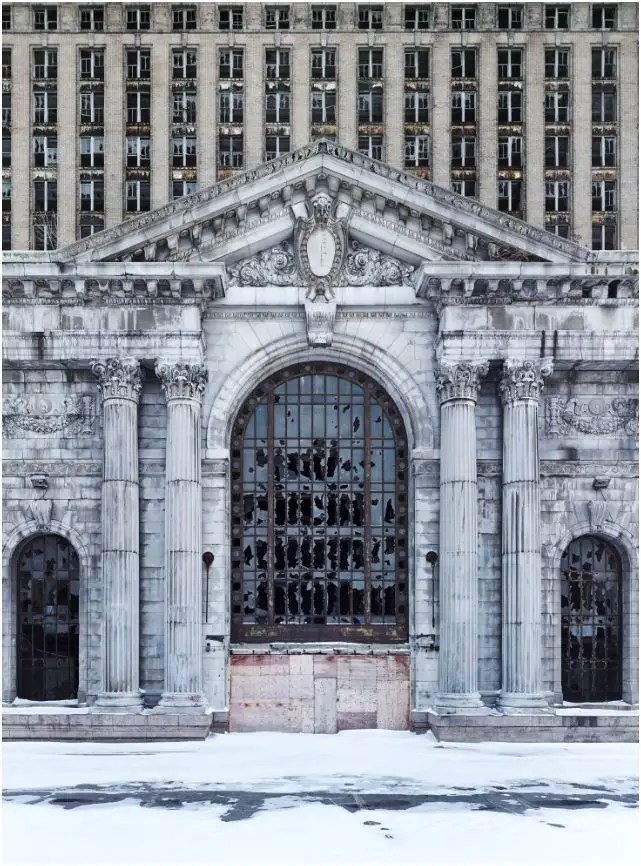Though Detroit has recently been looking like it was hit by a convoy of mile-wide firenados, there remain signs of architectural grandeur illustrating why it was once known as the Paris of the Midwest.
Perhaps nowhere is this faded beauty more palpable than in the large-format photography of Philip Jarmain, a Vancouver native who’s spent three years shooting Detroit’s sublime edifices, sometimes just months before they were wiped out by bulldozers. Jarmain may be from Canada, but he has century-old family ties to Detroit and extreme respect for the place.
“At one point this was probably the most important city in the world in terms of innovation, craftsmanship, and manufacturing,” he says, adding that one of his childhood heroes was Henry Ford. “It was just such an incredible city in the early 1900s, and obviously things went horribly sideways at some point.”
 Lee Plaza.
Lee Plaza.
When the 41-year-old advertising photographer started hearing disturbing rumblings in 2008, he decided to venture south to document the city’s Art Deco and Neo-Classical past before something horrible happened (well, even more horrible than the riots and urban decay) . So he hooked up with local historian Sean Doerr of Buildings of Detroit fame, and set out to locate what he calls the “iconic Detroit architectural masterpieces” hidden in a crumbling labyrinth of 80,000 to 100,000 abandoned buildings.
The search became more urgent when he realized many of his subjects were being eliminated by demolition crews trying to reduce the city’s expensive-to-maintain footprint (not to mention what he thinks were bored youngsters setting off fires). “It’s just sad because it is so beautiful, it has some of the best examples of early 1900s architecture of any city in North America,” he says. “Also, it probably rivals Baghdad in terms of burnt-out structures.”
While many photographers have rushed to stricken Detroit, lured by the so-called “ruin porn” that attracts sightseers to the wastelands of Chernobyl Jarmain’s mission is a bit different. He wants to preserve these venues with as much accuracy and detail as possible, so that future generations can look back in wonder about how bright the city shined. For that reason he lugs around a sophisticated, Dutch Cambo technical camera and German-engineered Schneider lenses. “These images are 5 feet by 7 feet,” he says. “It’s the best camera system out there.”
 Highland Park Police Station (demolished 2012).
Highland Park Police Station (demolished 2012).
The fruits of his nine trips into Detroit now hang on the walls of San Francisco’s Meridian Gallery for the show “American Beauty: The Opulent Pre-Depression Architecture of Detroit.” The exhibit focuses on the more ghostly and rotted-out carcasses in his oeuvre, although some of what he photographed has since been rehabbed into functioning spaces. Jarmain points out that several start-up companies have also invested in Detroit, including the luxury-watch company Shinola, a designer of an electric Tesla-like vehicle called the SP01, a nouveau-vintage bicycle maker, and others. “Despite all the hype about the bankruptcy, for the first time in 50 years Detroit could come back,” he says. “So I’m an optimist.”

Belle Isle Aquarium.

Woodward Presbyterian.
 Michigan Central.
Michigan Central.

Mackenzie High School (demolished 2012).

The German House.

*Photography-Philip Jarmain
